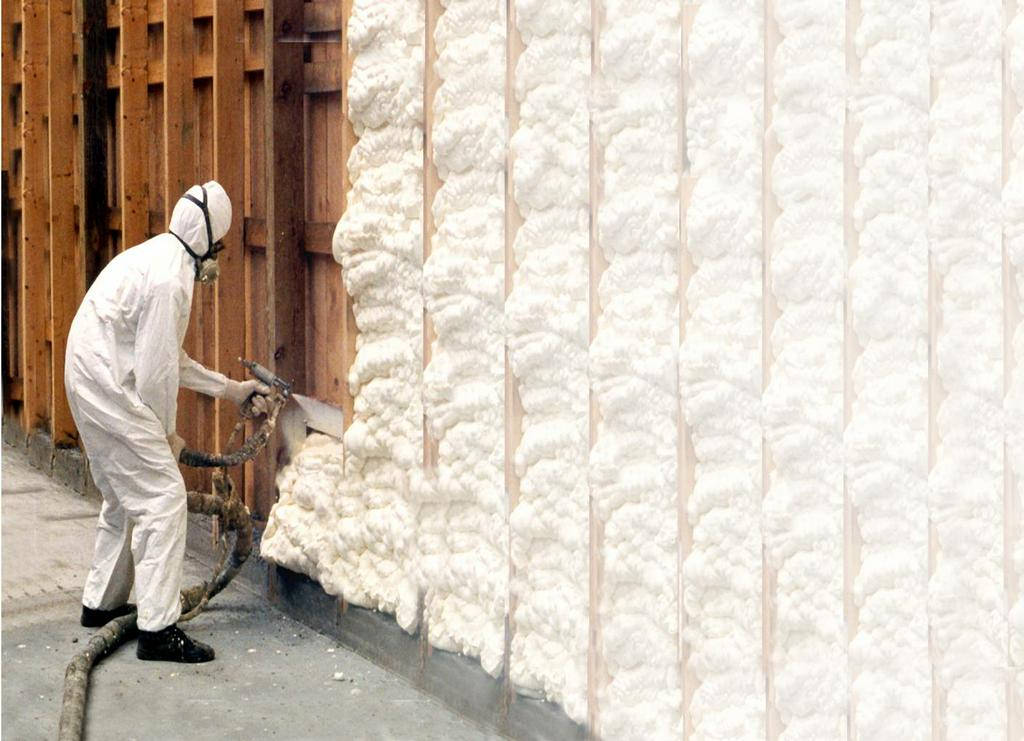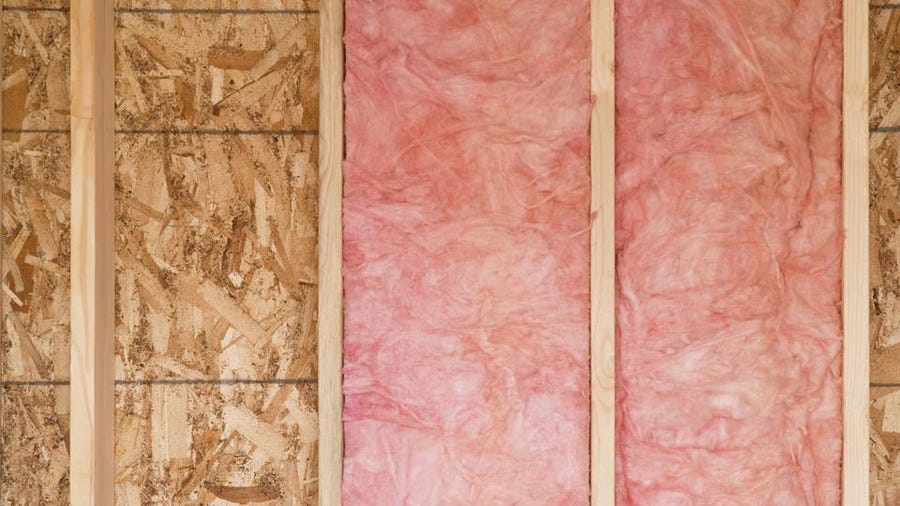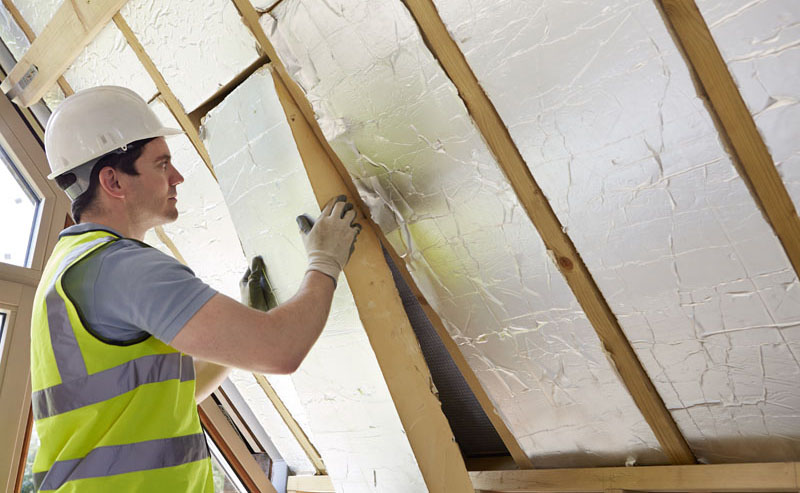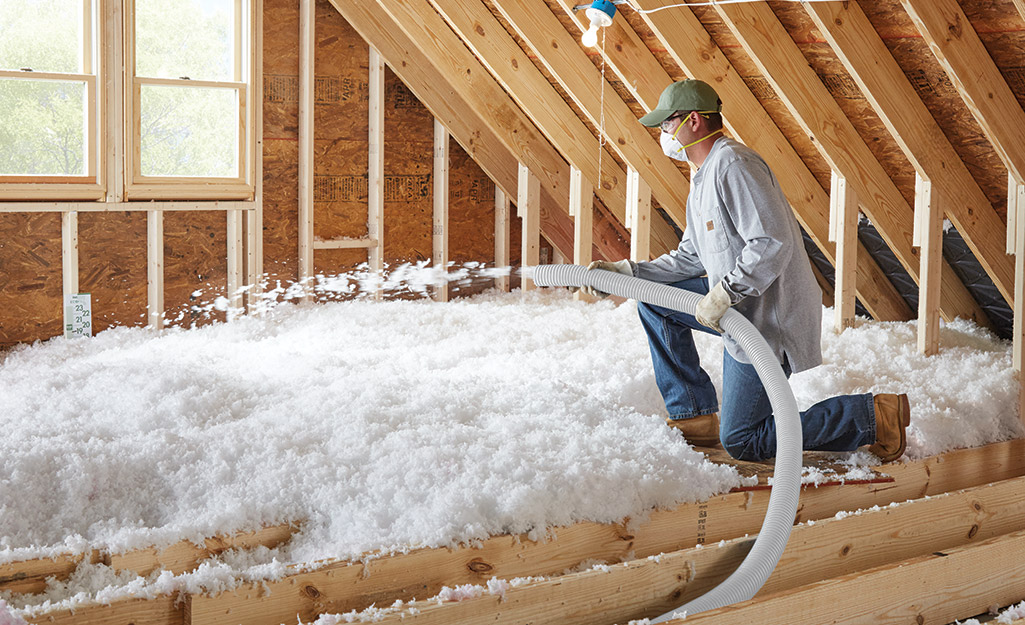For many homes, crawl spaces are a necessary part of construction but often can be difficult to keep insulated. Regulating temperature in the area is important not only for energy efficiency but also to protect any stored items from moisture damage. Fortunately, several different types of insulation are available to help you effectively insulate your crawl space.
But which type of insulation is best for your needs? And how do you go about installing it? This article will examine the different types of insulation for crawl space and their pros and cons. Let’s get started.
1. Spray Foam Insulation
Spray foam insulation is a great choice for crawl spaces, providing an air-tight seal when applied correctly. This insulation effectively reduces energy costs by preventing air leakage and moisture infiltration. It can also be used to improve the overall R-value of the space, which measures how well the material resists heat flow.
The main ingredients of spray foam insulation are water-blown and organic chemical compounds like polyurethane and isocyanate, which react together to create an expanding foam. This type of insulation comes in two different forms; open-cell and closed-cell.
a. Closed Cell Spray Foam Insulation
With foam insulation, two substances are blended by the installer and can be sprayed onto almost the surface. Commonly referred to as spray polyurethane foam (SPF) insulation, it has a strong adhesive quality that allows it to stick well on nearly all clean and dry surfaces.
The close-cell spray foam insulation is an excellent choice, boasting an R-Value of 6.5 to 7.0. It acts as a vapor and moisture barrier, making it ideal for the crawl space. It is known as 2lb foam insulation because one board foot, 12”x12”x1”, weighs approximately two pounds.
Sealing air leaks and gaps is another key benefit of closed-cell spray foam insulation over other types of crawl space insulation. If your home has a drafty crawl space, using this type of insulation can help create a comfortable environment with less energy wasted on heating or cooling.
b. Open Cell Spray Foam Insulation
Open-cell spray foam insulation is a more economical option when compared to closed-cell. It has an R-Value of 3.6 to 4.2, which is lower than its counterpart, but it can still provide substantial energy savings in the long run.
The cells of this type of spray foam insulation are not tightly packed, meaning it is not as effective at blocking air and moisture. However, while it may not be as efficient when keeping out drafts and humidity, open-cell spray foam insulation can still provide a significant thermal barrier.
Open-cell spray foam insulation is also less expensive and easier to install than closed-cell insulation. This makes it an excellent choice for crawl spaces that do not require the highest levels of insulation or airtightness.

Pros
Safe For Environment: There’s no need to worry about the environmental impact of spray foam insulation as it does not contain any hazardous materials. Additionally, it does not emit any noxious fumes that can harm your health.
Class One Fire Rated: Spray foam has achieved a Class One fire rating, making it an ideal choice for crawl spaces and other home areas where fire safety is of the utmost importance.
Does Not Retain Water: Because spray foam does not retain water, it will not promote the growth of mold and mildew in the crawl space, which can be a serious health concern.
Air Seal: You can trust that spray foam insulation will create an effective air seal in the crawl space, ensuring that your energy bills stay low and your home temperature remains comfortable.
Not A Food Source For Pests: Spray foam is not a food source for pests, which can be a significant concern regarding the safety of the crawl space.
Cons
Complex: Involving an expert to install spray foam is often necessary, as the material can be complicated and difficult for a DIYer.
Costly: Spray foam insulation is typically more expensive than traditional forms of insulation used in crawl spaces.
Odor: Some open-cell spray foams are known for emitting a slight odor when installed, so it’s essential to consider the brand of vapor barrier.
2. Fiberglass Insulation

Fiberglass insulation is one of the most common types of insulation used in crawl spaces. It is made of small glass fibers and can be installed as loose-fill or batts. Fiberglass insulation is ideal for providing a barrier to keep warm air out in the summer and cold air out in the winter, making it an efficient way to keep your crawl space as comfortable as possible. It’s also relatively easy to install and comes in various shapes and sizes, making it suitable for various spaces.
Also, the commonly used form of fiberglass insulation is treated with fire-retardant chemicals to make it more resistant to flame and heat. This makes it a great choice for areas prone to fires and basements or crawl spaces that may be more susceptible to moisture.
Batts and rolls of fiberglass insulation can be cut to fit your space and provide an effective barrier from the elements. However, it’s important to make sure that you choose the right type and amount of insulation for your particular crawl space, as too much or too little could result in wasted energy and money. You can install it with the paper vapor barrier facing up toward the heated living space and ensure the insulation fits tightly between the joists.
If not properly installed, gaps or holes can form in the insulation, allowing air and moisture to escape and potentially causing damage to your property. It’s important to make sure that any fiberglass insulation is installed properly so that you get the most out of it.
Pros
Easy For DIYer: With minimal training and effort, a DIYer can install insulation in crawl spaces. Without proper safety equipment and training, a DIYer should not attempt to install more complex insulation types.
Inexpensive: Being the most common type of insulation, fiberglass is also one of the most economical options.
Suited For Standard Stud: Fiberglass insulation is commonly used between standard wall studs and in crawl spaces, making it well suited for the task.
Cons
Air Pollution: Fiberglass insulation releases particles into the air if disturbed or cut, which can cause respiratory issues in people and pets who inhabit the home.
Durability: Fiberglass insulation wears down over time, becoming less effective at insulating the space. This can lead to higher energy bills and uncomfortable temperatures in the home.
Mold And Mildew: Trapping dust, allergens, and moisture in the crawl space can promote the growth of mold and mildew.
Skin Irritation: If fiberglass insulation particles come into contact with the skin, they may cause itchiness, rashes, and irritation.
Installation: Installing fiberglass insulation requires protective gloves, long-sleeved shirts, pants, and goggles to prevent skin and inhaled particulates.
Drooping: Over time, gravity can cause the material to droop in the crawl space, leading to less effective insulation.
3. Rigid Foam Insulation

Rigid foam board insulation is another option that can be used to insulate the crawl space of your home. It’s easy to install and provides great protection from moisture, vapor, and sound. Unlike fiberglass insulation, rigid foam insulation won’t settle or sag over time, providing consistent performance for years to come.
With rigid foam insulation, it’s important to ensure that all seams and gaps are properly sealed for maximum efficiency. In addition, you’ll want to check with your local building codes before installing rigid foam insulation in your crawl space, as certain types may require additional fire protection or other requirements.
With its rigidity, rigid foam insulation can provide excellent thermal performance and be easily cut to fit around pipes, posts, and other obstructions. This type of insulation is often used as a continuous layer along the crawl space walls or basement and can add structural stability when properly installed.
It tends to be more expensive than other forms of insulation but provides superior insulation value. It comes in different thicknesses and densities, which can be tailored to suit the specific needs of a space, making it an ideal choice for insulating crawl spaces.
With 2% plastic and 98% air, rigid foam insulation is a great option for achieving R-value in crawl spaces. It’s manufactured in various forms, including polystyrene, polyurethane, and polyisocyanurate. Polystyrene foam has an R-value between 3.6 and 4.2 per inch of thickness, while polyurethane and polyisocyanurate have higher R-values of 5.6 to 6.2 per inch, respectively. Polystyrene is typically used for interior applications and has a fire retardant added (for extra protection).
Which Type Of Crawl Space Insulation Should You Choose?
After weighing the pros and cons of each type of insulation, you can decide which type is the best for your crawl space. Depending on where you live, one may be more suitable due to climate considerations. Spray foam insulation works well in most climates, but rigid board insulation might be a better option when dealing with extreme heat. Also, fiberglass batts may be the most cost-effective choice for some homeowners.
No matter which insulation type you choose, it’s important to install it correctly and ensure that your crawl space is properly sealed from the outside elements. This will ensure that your home is well protected from any potential damage due to moisture or heat. Additionally, you should consider having a professional inspect the insulation periodically to ensure it’s doing its job properly.
Ensuring Longevity Of Insulation In Crawl Spaces
Following the manufacturer’s installation instructions ensures your insulation lasts as long as possible. Ensure you install it correctly and use the best crawl space insulation material. Some tips to ensure the longevity of insulation in crawl spaces include:
- Install Vapor Retarders: Vapor retarders reduce the amount of moisture and maintain the temperature in crawl spaces. These should be installed below grade, at the base of your foundation walls, or on your floor joists.
- Check Existing Insulation: If you already have insulation, ensure it provides adequate protection. Over time, insulation can become damp and ineffective. If this is the case, you should replace it with new insulation that meets the required R-value for your space.
- Unventilated Vs. Ventilated Spaces: If the crawl space is unventilated, you should use closed-cell insulation. This will help keep moisture from entering and accumulating in the space. For ventilated spaces, open-cell insulation is best for providing good airflow and preventing condensation.
- Choose The Right R-Value: Different types of insulation have different R-values. Choose the right R-value for your space, depending on how much insulation you need and where it is being installed.
- Pay Attention To Air Sealing: Ensuring proper air sealing around doors, windows, vents, and other openings will help keep conditioned air indoors and prevent energy loss.
- Maintain Temperature: Proper insulation will help to keep the temperature in your crawl space consistent. Make sure you set up a thermostat in the space and monitor it regularly. Additionally, make sure there are no air leaks or drafts that can cause temperature fluctuations.
Final Thoughts
Insulating your crawl space can help reduce energy costs and improve the comfort level in your home. You can create an efficient environment and protect your home from damage with the right insulation. Be sure to research the best types of insulation for crawl space and consult a professional if you have any questions. You can choose from spray foam, fiberglass, cellulose, rigid board, or reflective barrier insulation, depending on what is most suitable for your needs.
Weigh the pros and cons of each option to determine which is the best for you. Your crawl space will be well-protected, comfortable, and energy efficient with a good insulation system.


